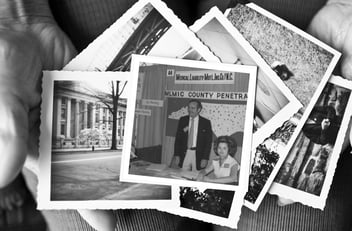Litigation Education: What Happens After a Case Is Resolved

Foreword by Kristi Wright
For certain cases, a settlement is the optimal resolution. But understanding the consequences of such settlements is crucial. Sonja Roller will walk you through the steps that follow the conclusion of a case.
If you’ve been involved in a lawsuit where you were a named defendant, you’ve endured the rigors and emotional roller coaster of litigation. The case has been resolved by settlement. You may be left wondering: what happens next? What are the implications of a settlement, and what steps follow once a payment is made on your behalf? Let’s break it all down.
What to expect after a settlement:
- National Practitioner Databank Reporting
The first step is your medical malpractice insurance company will submit a report to the National Practitioner Databank (NPDB), which is a legal requirement. At Curi, we make sure you and your defense counsel are involved in preparing this report. You’ll have the opportunity to review it before it’s finalized. While this might seem scary, it’s important to understand that most healthcare professionals will have at least one report submitted to the NPDB at some point in their careers, whether related to a claim or a settlement. - State Medical Licensing Board Reporting
Along with the NPDB report, most states have mandatory reporting to the state medical licensing board. Each state medical board handles the report response differently. In some states, the medical board will automatically open an investigation following a report. If you receive an investigation notification letter from your state medical board, it’s essential to send it to your claims consultant right away. This way, they can assist you with the investigation process, which may involve defense counsel. - Credentialing and Re-credentialing
Any claim or lawsuit filed against you must be disclosed in any credentialing or re-credentialing process. Your defense counsel can assist you with the disclosure when the need arises. Typically, they will help with the response one time, and you can save that for future credentialing needs.
Managing Post-Resolution Stress
While having a case behind you might bring some relief, the post-resolution processes can also result in stress. From the NPDB and state board reports to credentialing disclosures, remember that we’re here to support you throughout these steps, guiding you with the consultation and expertise you need.
In our next blog post, Lori Oechslin, Manager of Broad Regulatory Claims, will discuss what happens if you receive a medical board complaint.
For more insights into the litigation process, listen to Dr. Gita Pensa’s podcast: Doctors and Litigation: The L-Word, and watch Curi’s litigation education video thirteen, What Happens When a Case is Resolved.
SHARE THIS POST
About the Author








.jpg?width=352&name=iStock-1770754397%20(1).jpg)

Comments